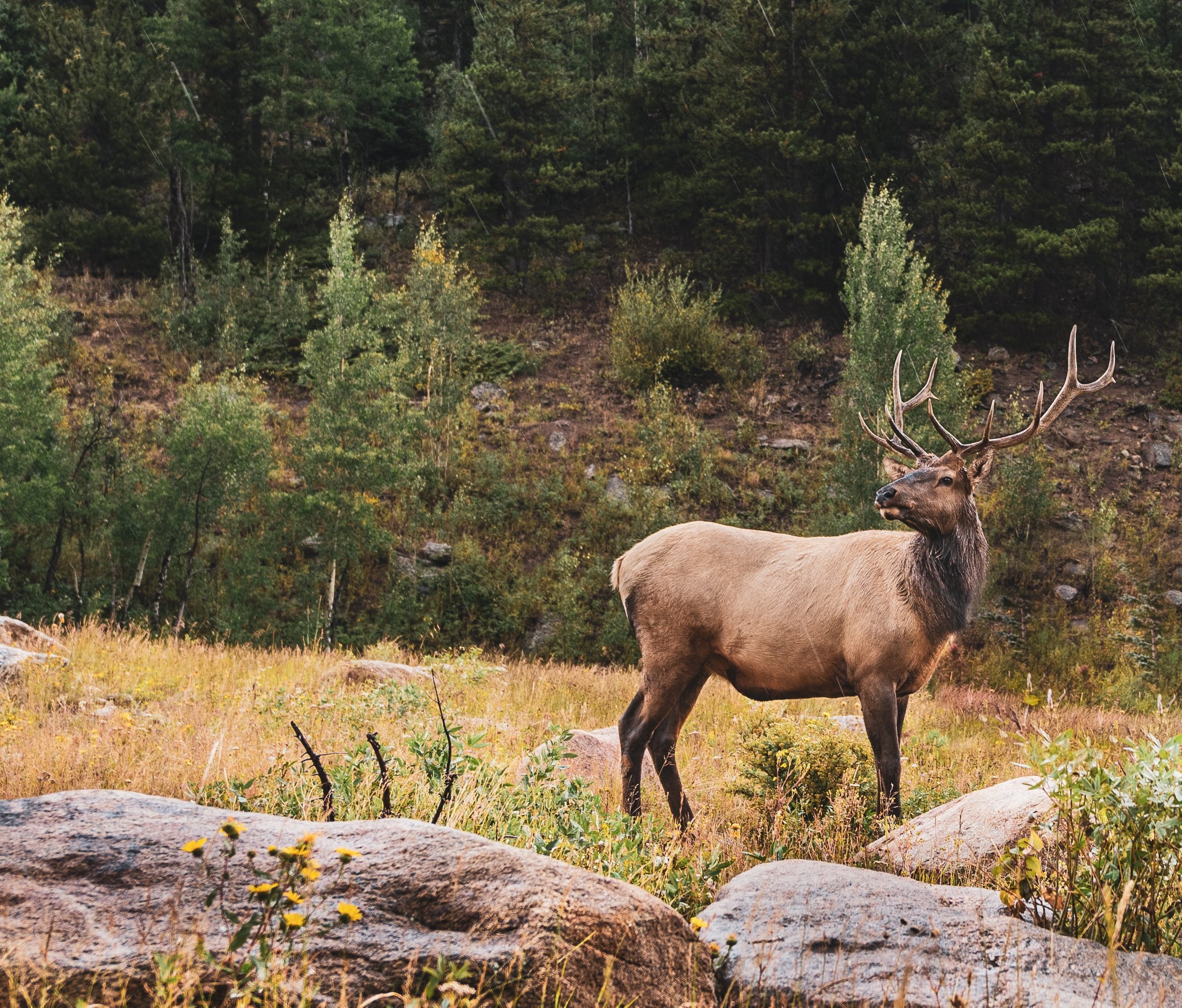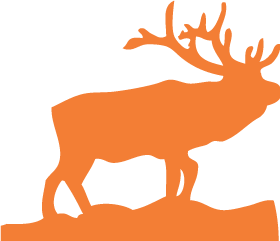
Long Range Hunting
Long Range Bullet Tests
Disclaimer: This is our first in-depth testing of bullets past 100 yards. We will continue to test at extended ranges if there is interest from the hunting community.
Recently, we have started testing how hunting bullets perform at longer distances. There have been many questions from the hunting community about how well non-lead bullets compare to lead based bullets at longer ranges. This testing was done by shooting five 1 and/or 2.5 gallon water jugs arranged in a row that were placed inside a modified 55 gallon plastic rain barrel. Once bullets struck the water jugs they expanded, and any fragments were captured at the bottom of the rain barrel. Fragments were collected by removing the used water jugs and excess water then using a turkey baster to collect the tiny fragments we were unable to pick up by hand. The testing was performed at 100-400 yards in 100 yard increments. It is understood that many shooters routinely take animals past 400 yards. It is important to know how your hunting bullet performs from your rifle and not rely on the manufacturers ballistic specifications when shooting at game animals. Knowing how your particular rifle shoots at longer ranges is vital to harvesting game ethically. Sighting your rifle at 100 yards, then relying on the manufacturers load data for bullet drop at extended ranges is unethical and unwise. This testing was done to 400 yards because that is how far the shooter could consistently shoot 2 inch groups with all the test ammunition.
For ammunition, we used .277 caliber bullets fired from a .270 Winchester with a 3-9x Leupold Scope. The ammunition was a variety of lead and non-lead bullets. We tested the following bullets: unbonded, bonded and long range lead bullets, polymer tip and untipped monolithic expanding copper bullets and segmenting copper hunting bullets. All of the bullets fired were measured with calipers to determine expansion. When recording data for the largest fragment, the largest copper jacket and lead core piece were weighed combined. Penetration was not recorded because the bullets were shot into either 1 gallon or 2.5 gallon water jugs depending on availability and uniform data could not be recorded.
| Lead: | Non-lead: |
| 130gn Sierra GameKing | 130gn Barnes TSX by Federal Ammunition |
| 130gn Nosler AccuBond | 130gn Nosler E-Tip |
| 130gn Berger VLD Hunting | 115gn Cutting Edge Copper Raptor |
Berger VLD Hunting:
Highly fragmented at all ranges. Weight retention was less than 50% for all ranges, and the largest fragments were pieces from the copper jacket.
Nosler AccuBond:
Copper jacket and lead core remained bonded at all ranges. Despite this, 23-33% of the bullet was lost as fragments that were recovered in the barrel trap. Expansion was around double diameter at all ranges. Nosler recommends a minimum velocity of 1800 feet per second (fps) to perform.
Sierra GameKing:
There was copper jacket separation at all ranges. Recovered many fragments from the barrel. Expansion was above double diameter, however expansion could only be measured using the hollow copper jacket.
Barnes TSX:
Weight retention was extremely high, over 99% for all ranges. Expansion was around double diameter at 100 and 200 yards and 1.8x diameter at 300 and 400 yards.
Nosler E-Tip:
Bullets were recovered at 100, 200 and 300 yards. We were unable to recover a 400 yard bullet due to the bullet hitting the rain barrel before the water and expanding prematurely. Expansion was nearly double diameter at 100 and 200 and 1.6x diameter at 300 yards. The E-Tip consistently lost 1% of its original weight. This was most likely the bullet losing its polymer expansion tip which separated upon impact. Nosler recommends a minimum velocity of 1800 fps to perform.
Cutting Edge Copper Raptor:
The Copper Raptor bullets expanded at all ranges consistently. They are designed to segment 6 petals after 1.5-2 inches of penetration while the shank continues through the animal. We did not measure the expansion range of the Copper Raptor since this bullet was designed to fragment in a controlled fashion, instead of expand into a larger frontal area. In earlier ballistic gel tests, the petals spread an average distance of 4-6 inches from the main projectile’s wound channel. Cutting Edge Bullets recommends a minimum velocity of 1500 fps for these bullets to perform as advertised.
Discussion
Whether lead bullets are advertised as unbonded or bonded they still leave lead fragments when striking an object at all ranges of the target. Monolithic expanding copper bullets reliably expand to approximately twice their diameter out to 300 yards, however tend to expand less at 400 yards.
If you often hunt beyond 400 yards or prefer to have a bullet that segments a number of petals we recommend using a bullet like the Cutting Edge Copper Raptor. This bullet is designed to segment 6 petals and have the base of the bullet continue through the target. It also performs very well at extended ranges and in this test performed the same at 400 yards as it did at 100 yards. The Copper Raptor typically has a higher ballistic coefficient than standard copper hunting bullets which also makes it a premium long range copper hunting bullet. Similar bullets include GS Custom and Maker Bullets, however we have not tested them in depth. If you regularly hunt at ranges under 400 yards, any monolithic expanding copper bullet will perform properly. There are many manufacturers offering monolithic copper bullets including, but not limited to, Barnes, Hornady, Remington, Winchester and Nosler. Please remember that the most important part of ethically taking game animals is shot placement. Testing, training and practice will insure that your shot goes where it needs to. There is no magic bullet that will bring down an animal if it does not strike vital organs.

Find Bullets
We understand that finding ammunition for a particular rifle can be difficult, especially so with hard-to-find calibers. While HWNL does not endorse any manufacturer or retailer over another, here are a few helpful tips to find ammo:
To find common cartridges, use a search function such as gunbot.net or ammoseek.com
If it isn’t found by using a search function, find a custom ammunition loader. Custom loaders can make any known cartridge, and some will use once-fired brass from the client to reduce costs.
Visiting your local gun store and asking for non-lead ammunition may be the most convenient way to purchase non-lead ammunition. Knowing what brands and bullet models are available in non-lead before going to your local store is always a good idea.
Bullets are widely available and we have found 293 cartridges loaded with non-lead bullets made by custom loaders.
Lastly, email nonlead@iws.org and use our experience to help you find the cartridge for you.









